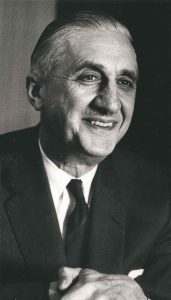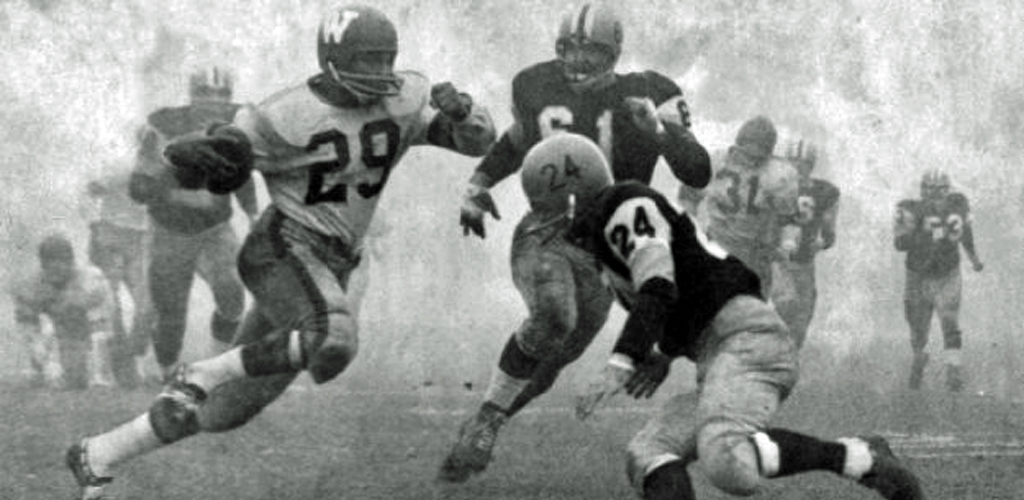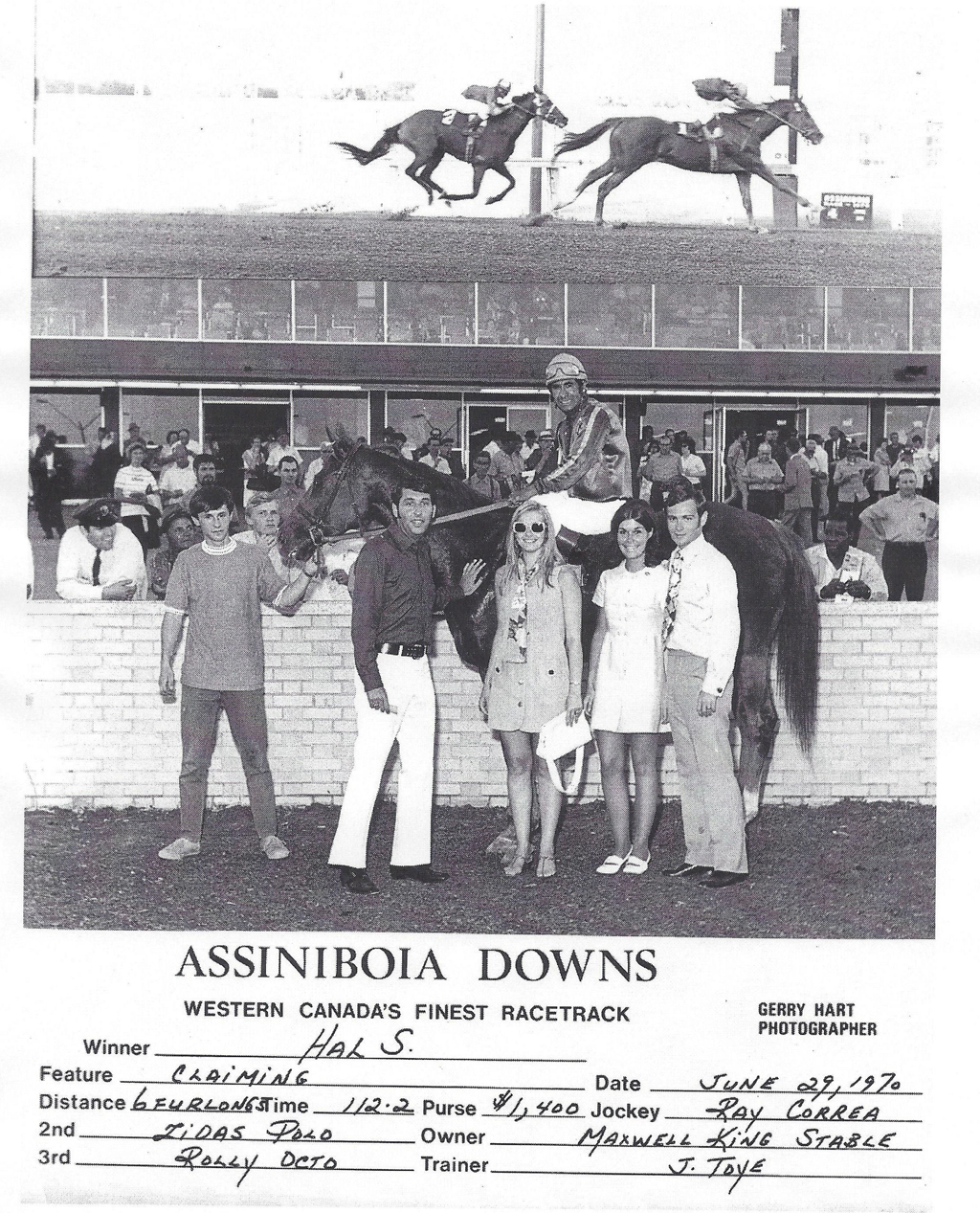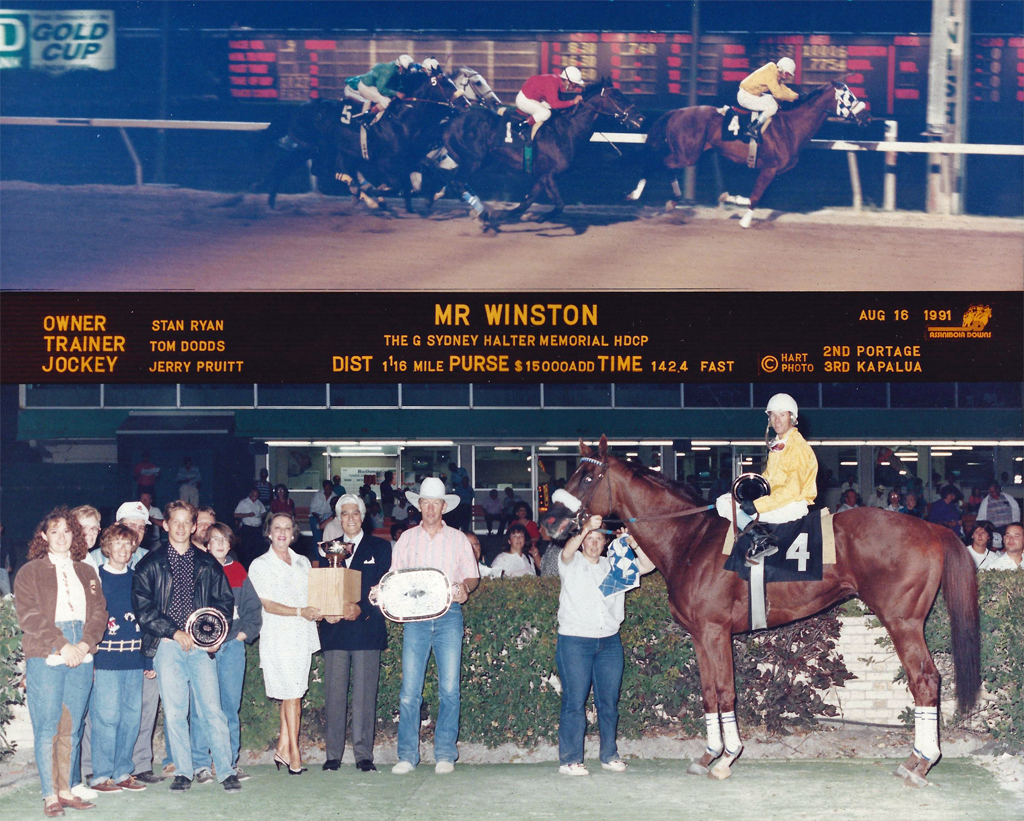
G. Sydney Halter
by Bob Gates
G. Sydney Halter was the fledgling Canadian Football League's (CFL) top boss from 1958 to 1966. As he was winding down his career in the world of Canadian football an opportunity arose for Halter to immerse himself in another sport he held near and dear to his heart, horse racing. Having reached the pensionable age of 60, a time when most were planning for their retirement, Syd Halter was given the chance to contribute to Manitoba's racing scene.
In April 1965, Premier Duff Roblin announced the appointment of a three-man commission whose function was to regulate thoroughbred and standardbred horse racing and the operation of all race tracks in the province. Hugh Macdonald was named chairman, Syd Halter, vice-chair and the third member of racing's new regulatory body was George Dowler. Halter would hold the post of vice-chair until 1972.
Horses were a hobby for the former CFL Commissioner, whose only real racing experience was betting on the ponies, something he enjoyed a great deal. At the time, there was no regulation that prevented him from betting, but in true "Halteresk" fashion, with his appointment, he knew it wouldn’t be proper, so he considered the mutuel windows off-limits.
Halter was self-taught and always attentive to the goings on at the track. He quickly became familiar with the running of the track and very knowledgeable with all facets of racing. Only rarely was he not in his private box watching the races. He was a bit of a loner, cut from the same cloth as the strict disciplinarian, Judge George Washington Schilling, who had presided over racing for almost four decades at River Park, Whittier Park and Polo Park race tracks.
Football and racing were vastly different sports, but Halter brought with him one thing that would serve him well in his duties with the Manitoba Horse Racing Commission (MHRC). Integrity. G. Sydney Halter's word was his bond.
Halter’s impact on sports is timeless. Case in point, the Winnipeg Blue Bomber's recent June 14 home game, which lasted more than five hours as a result of weather delays. A record for the longest CFL game ever? Nope, it was second! The longest game ever played was the 1962 "Fog Bowl." Who remembers that Grey Cup game?

The 1962 Fog Bowl.
The Winnipeg Blue Bombers were playing the Hamilton Tiger Cats in Toronto when play was suspended with just under 10 minutes to play. A thick fog had enveloped the stadium and blanketed the field to the point where playing the game was no longer practical. Commissioner Halter postponed the game with the Bombers leading by a single point. They played the final nine minutes and change the following day. Winnipeg won the game when neither team was able to score any additional points. The final score was 28-27. This two-day event made the Bomber's June 14 home game look like child's play.
Halter was always aware of the appearance of impropriety. I wish I could tell you if he knew that his friend Max Freed named a horse after him. The horse's name was Hal S (Hal as in Halter and S as in Sydney). Freed was well-known for such gestures, but in this case did an excellent job of disguising the name. Freed knew that Halter wouldn't have stood for anything that seemed improper.
In February 1972, Halter got the call to succeed Hugh Macdonald as Chairman of MHRC's three-man board. In 1974 the province increased the size of the MHRC from three to five, with at least one of the two additional appointments coming as a complete surprise to Chairman Halter. In 1975 the Commission was expanded to six. Also, in 1975, the Downs' administrative offices were moved from Polo Park Shopping Centre to the newly created offices at Assiniboia Downs.
Halter's law office had always been the site of the Commission's business dealings and he adamantly disagreed with the political directive that he move the MHRC's offices to the Downs. Cracks had formed between Halter and the political masters on Broadway. In the end, the differences became too great and Halter announced his resignation because of what he termed "political interference."
Halter’s resignation didn't keep him from the attending the races. He could still be seen in his usual box enjoying the action. Only now his self-imposed ban on betting was no longer needed. He was now able to wager on the races. The year 1976 also saw Scotty Kennedy out of racing for the first time in years, but Scotty was often seen in Halter's private box keeping company with the former head of the MHRC. Wouldn't you have liked to have been a fly on a wall to hear some of their conversations?
In June 1977 the man who succeeded Halter, Jim Cartlidge, announced his resignation and Judge Benjamin Hewak was said to be Cartlidge's replacement. Later that year however, the former Commissioner of the CFL and former Chair of the MHRC, G. Sydney Halter was back at the helm as Chairman of the Racing Commission, a position he would hold until 1982.
In March of 1982 Halter resigned for the final time when the government changed and the NDP took office. Leaving a post he was fond of, and one he had very much made his own, couldn't have been easy. Suffice it to say the outgoing Chair made sure all were aware of his views on the inexperience of the entire membership of the newly appointed racing commission. In short, Halter was not impressed.

Hal S. had a well disguised name!
Halter’s management style served him well over the years. He was a staunch believer that you needed to surround yourself with qualified people, but at day's end someone had to take charge. If Halter was in the room, you need not look any further. There were those who believed that the "G" in G. Sydney Halter stood for God. Make no mistake about it if Halter was chair, he was the boss. If you wanted him to head your committee, he had a list of conditions that had to be met or you looked for someone else.
The final week of October 1990 was a troubled time for Winnipeg's sports community. We lost Jets founder, Benny Hatskin, Winnipeg native, Scotty Bowman and G. Sydney Halter. It's difficult to imagine, but Halter finally met a challenge he could not overcome. They said he died while working at his desk in his Wellington Crescent apartment. He was 85.
Halter was a by-the-book, no nonsense kind of guy, but if discretion was appropriate he knew you could never go wrong if you just did the right thing. Free Press columnist, Elman Guttormson described Halter as "tall and ramrod straight" and said he had a "presence and a sense of dignity."
Halter's obituary was simple. It only gave the time and location of his service; still accolades followed. The Free Press' Hal Sigurdson said that Syd's contributions to sports were legendary. "He was the ultimate authority figure. When he walked in a room even George Trafton, Les Lear and Annis Stukus shut up and listened." I'll bet those are names you haven't heard in a while.
Sydney Halter probably contributed more to sport in Manitoba than any other person. This is evidenced by his induction into no fewer than seven Hall of Fames: Winnipeg Football Club HOF, Canada's Sports HOF, Manitoba Sports HOF, Canadian Football HOF, International Jewish Sports HOF, Canadian Horse Racing HOF and the Canadian Olympic HOF.
Following his death Assiniboia Downs renamed its Inaugural Handicap to the G. Sydney Halter Memorial Stakes. The race was run annually from 1991 to 2002 in honour of the man who was an integral part of racing in Manitoba.

Mr Winston wins 1991 G. Sydney Halter Memorial at ASD.
In one of my many "den-chats" with Bert Blake, he spoke of the legendary Halter. Blake described him as the best Horse Racing Commissioner ever. According to Blake, you didn’t meddle with his decisions. Why? Because they were well-reasoned and always fair. Blake had tremendous respect for Halter and spoke of the time when harness racing was coming to the Downs.
The MHRC ordered the Downs to "winterize" the press box. After a significant period of inactivity on the part of the track officials in this regard, the not amused Halter gave the Downs a 48-hour deadline for action to be taken to give effect to the Commission's Order, and that failure to do so would see the Commission close the track.
Could Halter really close the track? We'll never know, because the work was done posthaste and the rest shall we say is history…
Thank you for your service, Commissioner Halter!


